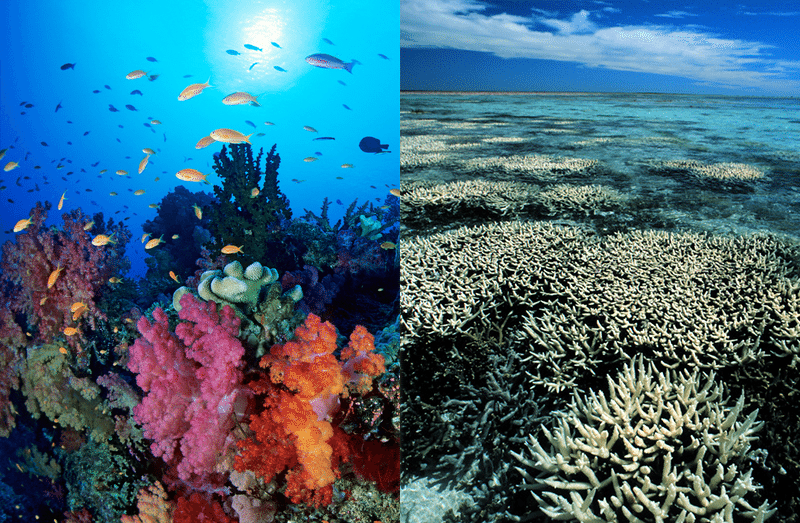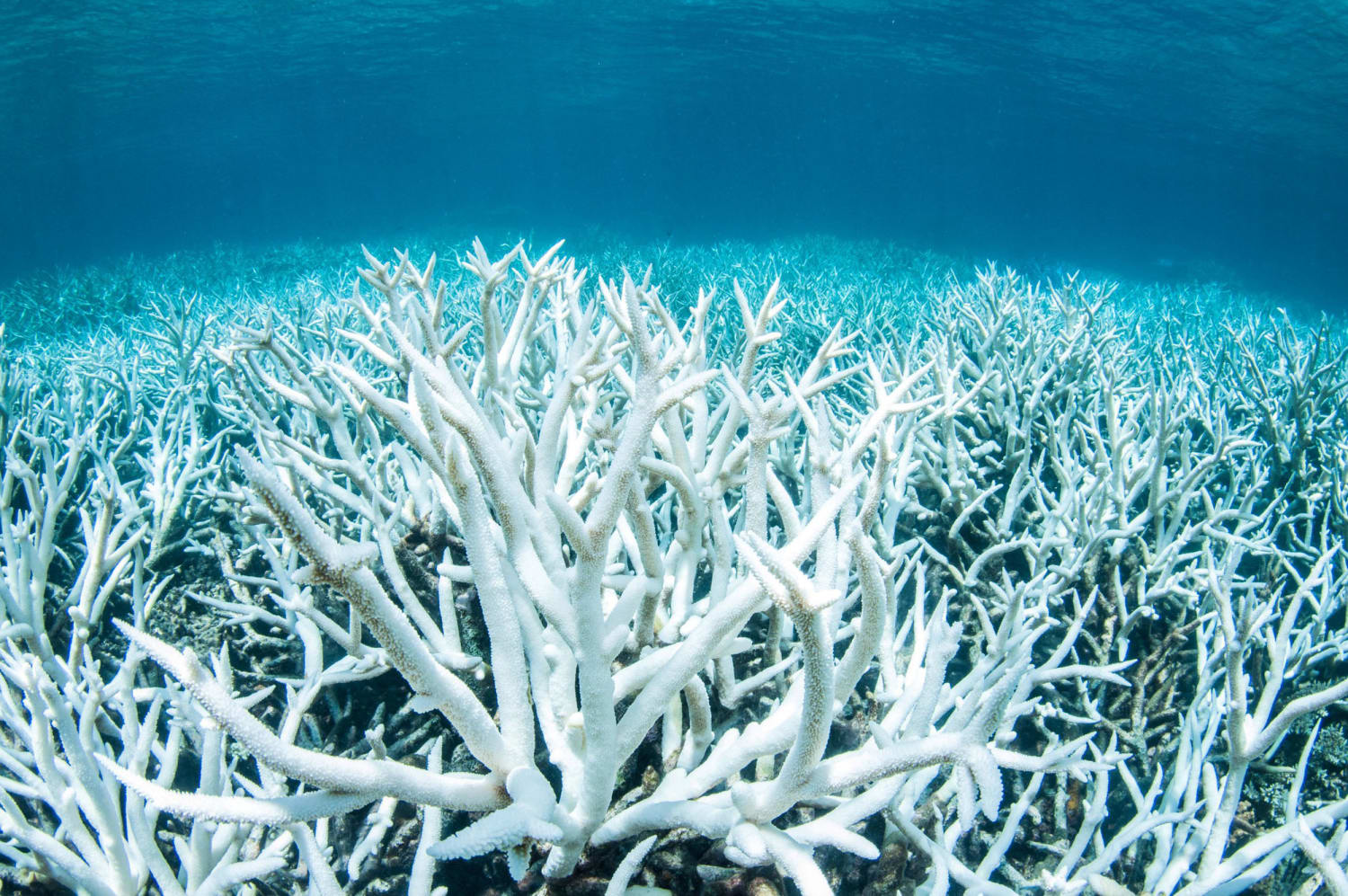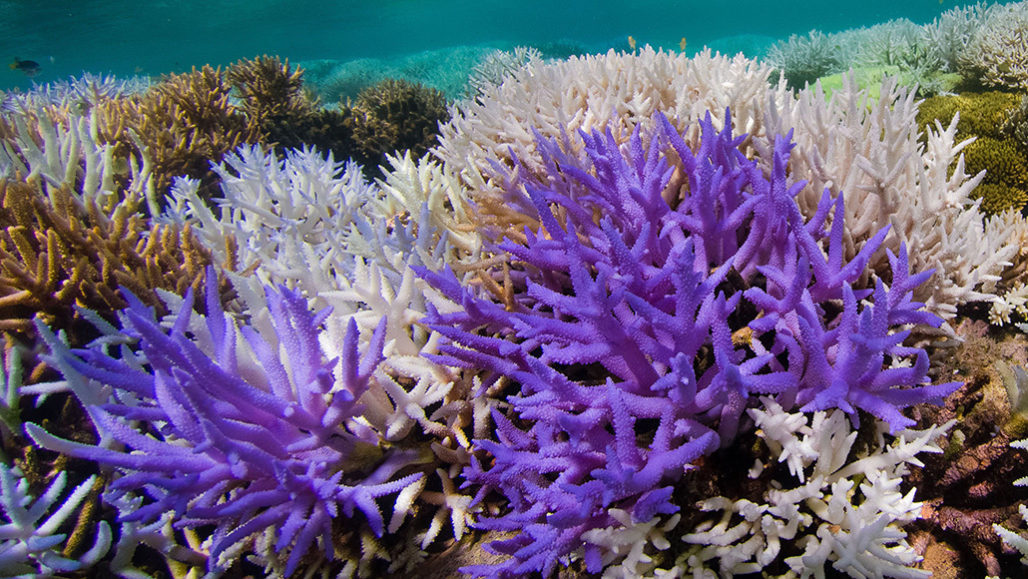Coral Bleaching | Marine Biology
I’ve talked about corals in one of my older posts, its purpose, the various shapes it can form, and how crucial they actually are for the survival of the entire marine ecosystem. There are many reasons why corals are dying; climate change, trawling, which is a type of technique to catch fish, which involves pulling a fishing net through the sea bed behind one or more boats, overfishing and so many more. In this post, I want to focus on coral bleaching, why it occurs, and if there is anything we can do to help save the lifeline of the oceans.
Many of you may be wondering what coral bleaching actually is. Well, when corals are stressed by changes in conditions such as temperature, light, or nutrients, they expel the symbiotic algae living in their tissues; zooxanthellae, causing them to turn completely white. Corals don’t actually die due to bleaching, they are under a lot of stress, since they lost their source of food, the zooxanthellae.
This topic is tied in with climatic changes, which is very vast to cover completely in this post, so here’s a quick rundown; climate change includes both global warming driven by human-induced emissions of greenhouse gases and the resulting large-scale shifts in weather patterns. Over the past century, sea surface temperatures have risen by an average of about 0.13 degrees Celsius per decade as the oceans absorb the vast majority of greenhouse gas emissions from human activities. Corals can become stressed when temperatures around them rise just 1 C above their tolerance level. With water temperature elevated from global warming, even a minor heat wave can become devastating.With this information, it may feel like corals won’t be able to recover from a bleaching event, and that’s completely true, most corals are unable to feed themselves, and while under the whole stress of losing their algae, it just becomes harder. However, there is a small possibility that some corals can recover from such events, and if corals can survive this, it gives them an opportunity to reproduce. If conditions return to normal, and stay that way, corals can regain their algae, return to their bright colours and survive. However prolonged warmer temperatures and other stressors, like poor water quality, can leave the living coral in a weakened state. It can struggle to regrow, reproduce and resist disease – so is very vulnerable to coral diseases and mortality. It can take decades for coral reefs to fully recover from a bleaching event, so it is vital that these events do not occur frequently.
Why should we care about this decline in corals? I mean, its not like we see it happening, and it hasn’t affected us so far, why bother now? Because coral colonies serve as the foundations of coral reef ecosystems, their decline may translate into a loss of habitat for numerous plant and animal species that depend on them. Without living space and food sources, populations of reef-dependent fishes and other forms of marine life can drop precipitously. There is concern that widespread coral bleaching may cause some species to become extinct locally.
Once these corals die, reefs rarely come back. With few corals surviving, they struggle to reproduce, and entire reef ecosystems, on which people and wildlife depend, deteriorate. In many places, the loss of coral reefs would amount to an economic disaster, depriving fishermen of their main source of income, forcing people to find more expensive forms of protein and undermining the tourism industry. Coral reefs are natural barriers that absorb the force of waves and storm surges, keeping coastal communities safe. Without them, we must rely on manmade seawalls that are expensive, less effective, and environmentally damaging to construct.
Well, its not only us that these bleaching events affect, it also affects the marine life. Coral reefs provide shelter, spawning grounds, and protection from predators. They also support organisms at the base of ocean food chains. As reef ecosystems collapse, already at-risk species may face extinction.
Bleaching also matters because it’s not an isolated phenomenon. According to the National Oceanic and Atmospheric Association, between 2014 and 2017 around 75% of the world’s tropical coral reefs experienced heat-stress severe enough to trigger bleaching. For 30% of the world’s reefs, that heat-stress was enough to kill coral.
So, what is it that we can do to help out? When Visiting Coral Reefs, practice safe and responsible diving and snorkelling. Avoid touching reefs or anchoring your boat on the reef. Contact with the reef will damage the delicate coral animals, and anchoring on the reef can kill corals, so look for sandy bottom or use moorings, if available. Take a reef-friendly approach to sun protection. Some ingredients in sunscreen can be harmful to or even kill corals. Inform yourself of safer choices for coral. Better yet, cut down on sunscreen use by wearing a long-sleeved shirt or rash guard to prevent sunburn.
Recycle and dispose of trash properly. Marine debris can be harmful to coral reefs. Recycle your trash at home and on the go (especially plastic), and remember the three R’s (reduce, reuse, and recycle). When disposing of trash, do it properly in bins, to avoid trash being blown or washed away into waterways and oceans. On beaches, make sure you leave no trash behind, and never throw or leave any cigarette butts in the sand. You can help keep your rivers and streams clean by volunteering to pick up trash in your community. Check with your local environmental organizations for annual trash clean ups and make sure to check the annual International Coastal Clean up.
Minimize use of fertilizers. EPA diver swimming over a coral reef outcrop showing stony corals and soft corals (sea fans). EPA diver swimming over a coral reef outcrop showing stony corals and soft corals (sea fans). The overuse of fertilizers on lawns harm water quality because nutrients (nitrogen and phosphorus) from the fertilizer are washed into waterways and eventually end up in oceans. These nutrients pollute the water and can harm coral reefs.
And use environmentally-friendly modes of transportation. Instead of driving a car, try to walk, bike, or use public transport (like buses and trains) more often. If you are planning to buy a car, choose a fuel-efficient vehicle like a hybrid or electric car. Using these cleaner transportation methods can help reduce the amount of greenhouse gasses that are emitted into the atmosphere. These emissions contribute to ocean acidification and increased ocean temperature. More acidic ocean waters impede coral growth and warmer waters cause coral bleaching.
If you enjoyed reading this, you might like my previous post on Clownfish, check it out !
https://musings-of-a-musical-biologist.blogspot.com/2021/05/clownfish-marine-biology.html
Citations:
What is coral bleaching?
What is climate change?
https://www.ipcc.ch/site/assets/uploads/2018/02/WG1AR5_SPM_FINAL.pdf
Temperatures affecting bleaching
Impacts corral bleaching has
https://www.britannica.com/science/coral-bleaching
What can we do to help?
https://www.epa.gov/coral-reefs/what-you-can-do-help-protect-coral-reefs
/cdn.vox-cdn.com/uploads/chorus_image/image/54323729/Pasted_image_at_2017_04_18_03_43_PM.0.png)






Good one Chloe👍🏻👍🏻
ReplyDeletethenk youu🥰
DeleteIt's really amazing. Proud of you Chloe👍👍😁
ReplyDeletethank youuu💖
Delete